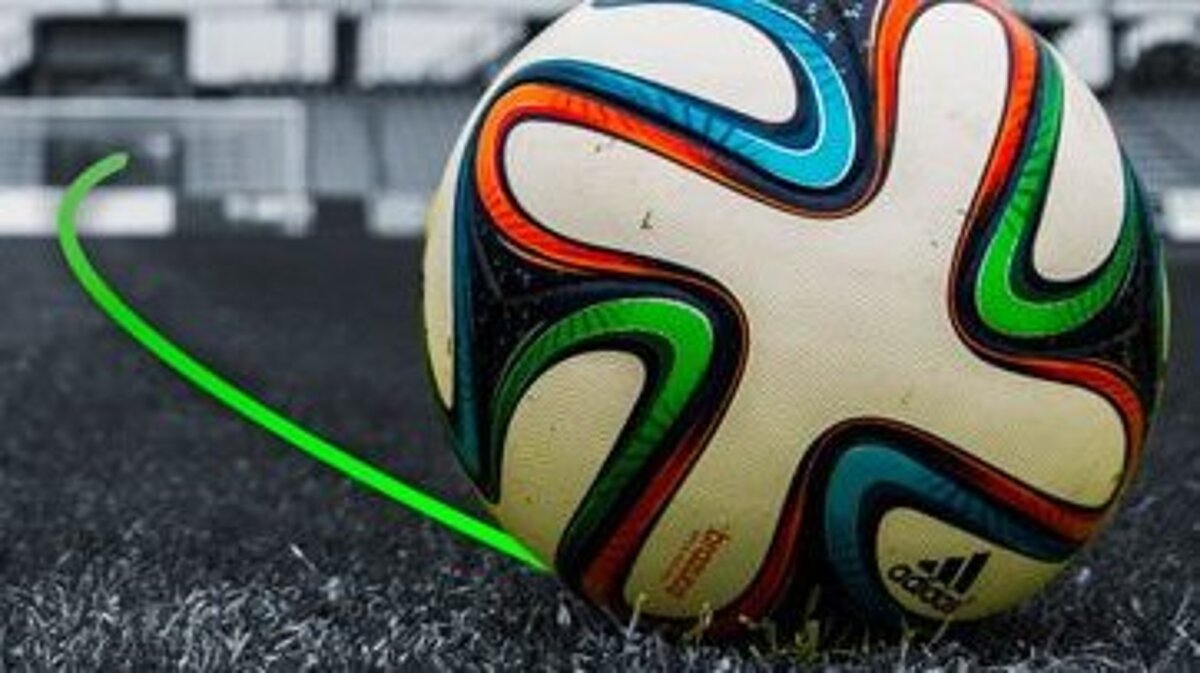Soccer wisdom physically questioned

Does a wet lawn make the ball go faster?
Do you know the saying "a wet lawn makes the ball go faster"?
This refers to a situation when a player shoots the ball, the ball flies towards the goal and touches down on the grass in between. If the grass is dry, the ball slows down. If the grass is wet, the ball is visibly faster after touchdown than on dry grass. The goalkeeper may misjudge the speed of the ball.
What's the truth of the claim?
First of all, the ball gets an impulse from the player's shot. The ball then has kinetic energy and an initial velocity v1. This is reduced by air resistance (which we neglect here). When the ball touches down on the turf, friction is created between the turf and the ball. This exerts a force on the ball opposite to the direction of motion. Since the force acts outside the center of gravity, it causes the ball to rotate. The ball thus gains rotational energy. Where does this energy come from? Friction between the turf and the ball converts some of the kinetic energy into rotational energy and a small amount into heat. The ball therefore has less kinetic energy after contact with the turf, i.e. it has slowed down.
On wet turf, the friction between the turf and the ball is lower. Therefore, less kinetic energy is converted into rotational energy. The ball does not lose as much speed and does not gain as much rotational energy as on dry grass. It is therefore faster after touchdown than on dry grass, but of course not faster than before touchdown. For that, the ball would have to experience a force in the direction of motion.
How does the banana flank work?
A player runs along the sideline and strikes the ball toward the penalty area. The trajectory of the ball describes a curve, the famous banana cross, as played by Manfred Kaltz, for example.
Or a free kick situation: The goalkeeper positions the wall in such a way that the player cannot shoot directly at the goal. The player runs up and circles the ball around the wall, right into the corner. Goal!
How does the player manage to shoot the ball in an arc? Why is the trajectory of the ball curved?
What the shooter has to do is the same thing that, for example, tennis or table tennis players do when they play a topspin ball. When the shooter shoots the ball, he additionally puts it into rotation, but unlike the topspin in tennis (which rotates around the horizontal axis), he puts it into rotation around the vertical axis.
With a rotating ball in a moving medium (air), the Magnus effect occurs. The air flows around the ball on all sides. On the inside of the trajectory the ball rotates with the air flow, on the outside against the air flow. The air close to the ball is thus carried along by the ball on the inside and slowed down on the outside. According to Bernoulli, the pressure in a fluid decreases when the velocity increases. In this case, this means that the pressure close to the ball on the inside of the trajectory is lower than on the outside. This causes a force to be exerted on the ball that points from the outside to the inside of the trajectory (perpendicular to the trajectory). This leads to the curved trajectory (Magnus effect).
In addition, turbulence plays a role here. On the inside of the trajectory, where the ball rotates in the direction of air flow, turbulence forms on the surface of the ball later than on the outside of the trajectory, where the ball rotates against the direction of air flow. As a result, the flow experiences an impulse in the direction of the outside of the trajectory. As a counterforce to this, the ball experiences a force in the direction of the inside of the trajectory.
Or as Horst Hrubesch put it:
"Manni banana, me head, goal."



